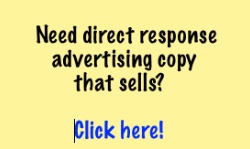by Brad Petersen
On September 7, 2010 — nearly three l-o-o-o-o-n-g years ago — I sent out the most recent issue of what was supposed to be a weekly marketing ezine, “The Weekly Breakthrough.”
And for the last 140 weeks in a row, I’ve sent exactly nothing to you and my other subscribers.
It’s been so long since I was last in touch, you may not even remember who I am or how you got on my list.
I feel like the cobbler whose kids have no shoes.
I teach marketing…
I hound my clients to stay in regular touch with their prospects and customers…
I preach relationship-building…
Yet I can’t even put out a simple ezine on a regular basis.
Worse yet, I don’t even have a system in place for regularly staying in touch with prospects who have inquired about my copywriting and marketing services.
My inbox is littered with good prospects that I’ve been ignoring because I’m busy with one project or another and have never taken the time to build any sort of system for staying in touch or building a relationship.
Can you say stupid?
So please accept my apology and feel free to slap me upside the head the next time you see me.
More importantly, learn from my stupid mistake — a mistake made by all too many business owners in this hectic day and age.
You see, I rarely come across a business owner who does nearly enough to stay in touch with his or her prospects and customers.
Or even if they do follow up, they have some arbitrary maximum number of touches — seven seems to be common for some reason. And once they’ve reached that number of touches, they drop the person from their list if they haven’t yet sold them.
Or they focus exclusively on prospecting for new customers, while almost completely ignoring their existing customers.
The problem is, unless you’re in regular touch with your prospects and/or your customers, they will forget about you — and you will leave a small fortune sitting on the table.
So I urge you to make a commitment right now to say in regular contact with anyone who…
…has ever bought a product or service from you…
…has ever inquired about your products or services…
…has ever referred someone to you, or has the potential to refer someone to you…
…or you can help with your product or service.
Here are some ideas to get you started:
* Start a free monthly or quarterly print newsletter loaded with tips your prospects and customers can use to improve their lives. It doesn’t need to be fancy. Even one page will due. Just make sure it contains something your prospect or customer will find of value.
* Send out a postcard every now and then, reminding prospects and customers that you’re alive and making them a special offer. An occasional full-blown sales letter is a good idea, too.
* Send out a daily or weekly email tip that provides a little value, makes them an offer and keeps you on their radar.
I’ll flesh this out a little more in future issues — and give you some additional ideas for staying in touch.
Until then, happy selling.

